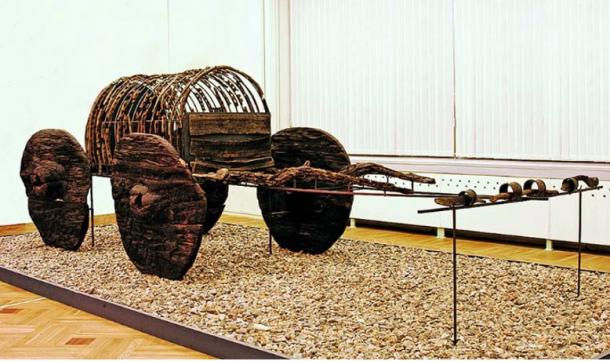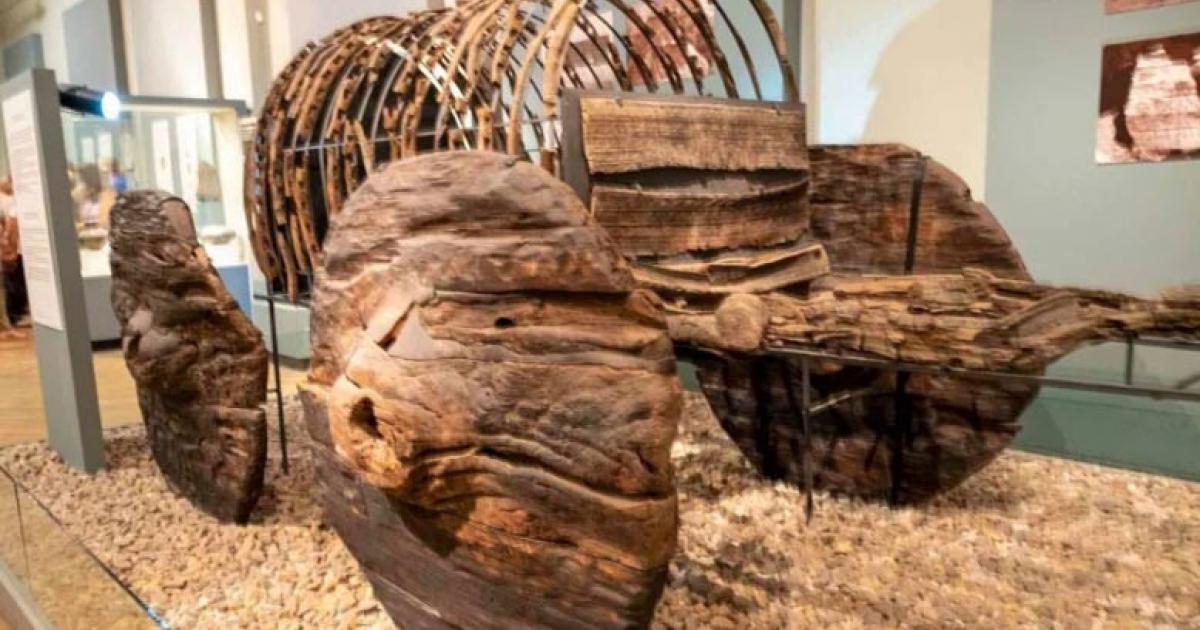Introduction
When excavating ancient sites, archaeologists are often left with remains made from non-perishable items. Wood, leather, flesh, cloth, and other organic materials rarely survive the test of time, as they rot away and disappear over the centuries. However, under the right conditions, even these delicate materials can be preserved for a very long time.
Such is the case with the remarkable Lchashen Wagon, a relic from the ancient world that provides a fascinating glimpse into the technological advancements and cultural practices of early Iron Age Armenia. Discovered in 1956 during excavations at the Lchashen cemetery on the shores of Lake Sevan, this well-preserved wagon offers invaluable insights into the ingenuity and craftsmanship of its creators.

The Discovery of the Lchashen Wagon
The Lchashen cemetery, located on the shores of Lake Sevan in Armenia, has yielded numerous archaeological treasures dating back to the Bronze and Iron Ages. In 1956, Soviet archaeologists were conducting excavations in the area when they made a remarkable discovery – the Lchashen Wagon, a remarkably well-preserved ancient vehicle.
The discovery of the Lchashen Wagon was made possible by a unique set of circumstances. To help irrigate the vast Ararat plain nearby, the Soviets had to drain a portion of Lake Sevan, lowering its levels and revealing a massive historical location. This site, rich in archaeological wonders, had been submerged for centuries, preserving many of its organic artifacts that would have otherwise rotted away.
Among the most significant finds was the Lchashen Wagon, which dates back to the 15th-14th centuries BC. This discovery was pivotal in showing the technological prowess of the people who inhabited this area during the early Iron Age.

A Marvel of Ancient Engineering
The Lchashen Wagon is considered a marvel of ancient engineering. Measuring approximately 2 meters (6.5 ft) in length, it is constructed primarily of oak wood, with bronze fittings that highlight the metallurgical skills of its makers.
The wagon’s frame is composed of sturdy wooden beams, intricately joined together to provide strength and durability. The wheels, also made of wood, are reinforced with bronze hubs and rims, ensuring they could withstand the rigors of travel over rough terrain.
The use of bronze not only for functional purposes but also for decorative elements indicates a high level of craftsmanship and an understanding of both aesthetics and utility. Extensive research and scanning have revealed that parts of the wagon were adorned with intricate carvings and geometric patterns, suggesting that it was made for a powerful person, likely a local ruler.
These decorations are not merely ornamental but also serve as cultural markers, providing insights into the symbolic and religious beliefs of the ancient Armenians. The presence of such detailed artwork on a utilitarian object like a wagon indicates the importance of art and symbolism in their daily lives.

Implications for Ancient Transportation and Trade
The discovery of the Lchashen Wagon has significant implications for our understanding of ancient transportation and trade in the region. Wagons such as this one were likely used for a variety of purposes, including the transportation of goods, agricultural produce, and possibly even people.
The existence of such a sophisticated vehicle suggests that the region had developed a network of trade routes, facilitating the exchange of goods and ideas. This, in turn, implies a certain level of socio-economic complexity and organization within the society. Besides this wagon, a total of 12 were discovered in the region, in various states of preservation.
The ability to create durable and functional vehicles would have been crucial for the movement of goods and people, contributing to the economic and cultural development of the region. The integration of bronze into the wagon’s design highlights the metallurgical capabilities of the society and suggests that they had access to resources and trade networks that allowed them to acquire and utilize this valuable material.
Insights into Ancient Beliefs and Traditions
Since the Lchashen Wagon was discovered within the bounds of a vast burial site, it is proposed that it belonged to a high-status person and was buried with them as something to be used in the afterlife. As such, the find also tells us something about the funerary beliefs of the peoples belonging to the ancient Lchashen-Metsamor culture.
The wagon’s construction, decoration, and context within the Lchashen cemetery all contribute to a better understanding of ancient beliefs and traditions, as well as the technological capabilities of this ancient culture. This discovery challenges the notion that our ancestors were less technologically advanced than we are today, and it serves as a testament to the ingenuity and craftsmanship of the people who inhabited this region during the early Iron Age.
Conclusion
The Lchashen Wagon is a remarkable relic that provides a fascinating glimpse into the technological advancements and cultural practices of ancient Armenia. This well-preserved artifact not only highlights the sophistication of early transportation methods but also serves as a critical piece of evidence in understanding the socio-economic and cultural dynamics of the region during that period.
The Lchashen Wagon is a testament to the remarkable capabilities of our ancestors, and it serves as a reminder that we should never underestimate the ingenuity and creativity of the people who came before us. As we continue to uncover and study these ancient relics, we can gain a deeper appreciation for the rich and complex history of our shared human experience.

